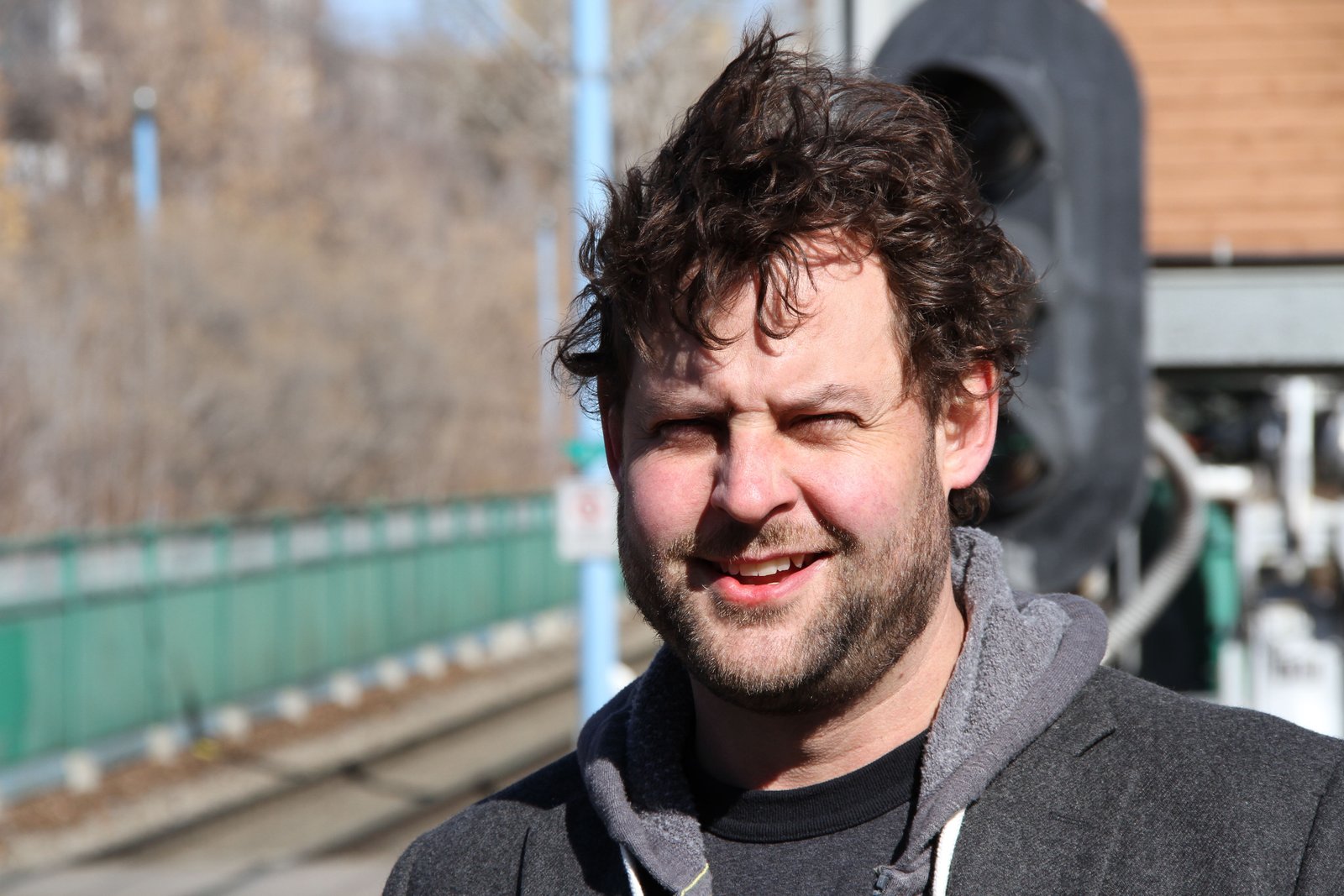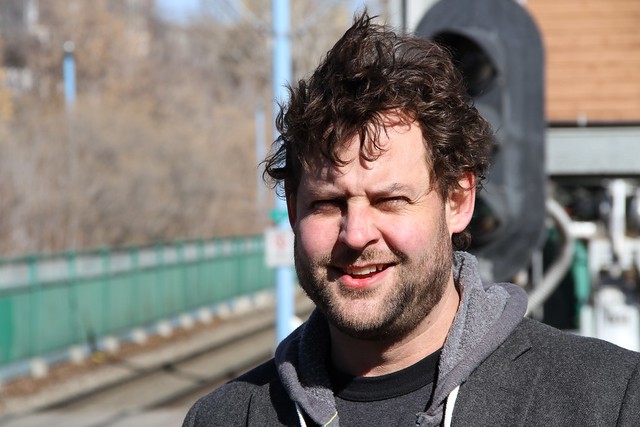By David Dodge and Duncan Kinney
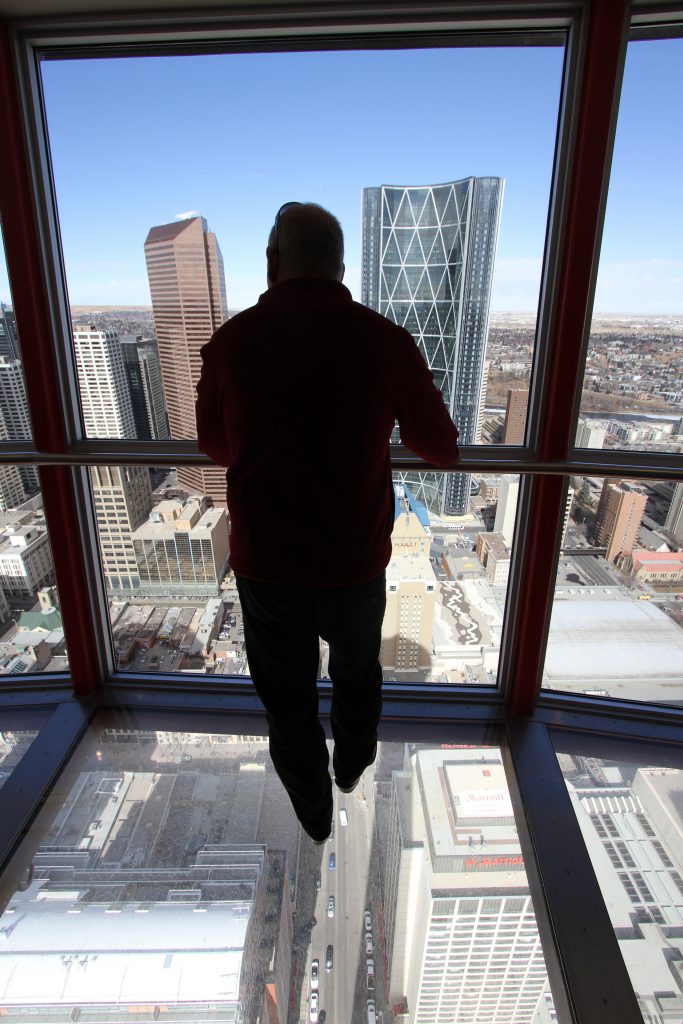
A visitor to the Calgary Tower stands on glass and ponders downtown Calgary.
Author Chris Turner calls it “the great leap sideways, the big jump we all need to take that leads to the brightest possible future.”
The leap Turner is referring to is to replace non-renewable energy with renewable energy in the next 50 years. “We need to move to wind, solar, biomass, geothermal, some small scale hydro, maybe some large scale hydro, and maybe some nuclear.”
Inspired by the attention that wasn’t being paid to climate change Turner started writing about solutions instead of problems.
And that is the idea and purpose behind the Green Energy Futures series. We will seek out and tell the stories of people engaged with green energy solutions in their homes, businesses and government.
My own inspiration for the series came while serving on the City of Edmonton’s Renewable Energy Task Force. I was very surprised to learn about all of the exciting green energy initiatives that we don’t hear about. I realized that interest in green energy is very high and that it cuts across traditional ideological lines.
Chris Turner inspired many people with his first book, The Geography of Hope. Like his latest book The Leap, it’s focused on telling the stories of the people who are succeeding in implementing green energy solutions. We caught up with Chris Turner in Calgary, Alberta.
“The core idea in The Leap is going all the way in your thinking,” explains Turner.
“The grand narrative of the industrial revolution is in some ways about people seizing opportunity,” said Turner. Today that opportunity is in renewable energy where not only can we seize a sizable economic opportunity but avoid catastrophe at the same time.
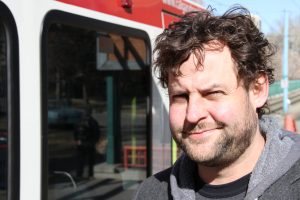
Author Chris Turner at a Calgary LRT system, a public transit system powered by the wind.
Whether motivated by climate change, the finite nature of non-renewable resources like oil or a sense of pragmatism that sees diversification of the global energy supply as a good idea, we are in the midst of a great energy transformation.
This transformation doesn’t mean halting the use of oil on Monday and firing up wind turbines on Tuesday. The credible scenarios and models done by non-profits and oil companies alike foresee fossil fuels being used for quite some time through even the most aggressive transitions to sustainable energy.
Three Leaps
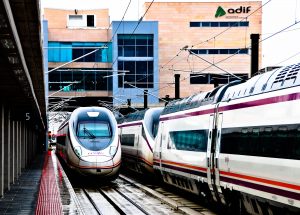
A Spanish AVE train in Segovia Spain. The high speed rail network in Spain revived sleepy bedroom communities.
Chris Turner says we need three big leaps: the leap to green energy, a leap in urban design and finally a leap in transportation.
Spain went from one of the worst rail systems in Europe to one of the best and they did it inside of a generation.
The original idea was to connect Spain’s major cities like Seville and Madrid, but a funny thing happens when you build a train that goes 310 kph. Smaller cities on the line such as Ciudad Real that were once two hours outside of Madrid are now 45 minutes from the heart of the major city.
Ciudad Real thrived as the mobility afforded by the high speed rail system meant that commuters could live and work to their preference, taking advantage of the big city or the peaceful countryside.
When the Madrid to Barcelona high speed rail line was built flights between the two cities dropped 46 per cent and each passengers’ carbon footprint plunged 83 per cent.
Urban Design
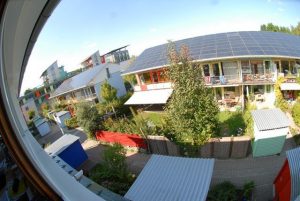
The Solarsiedlung in Freiburg, Germany is Europe’s most modern solar housing development. The project has 58 residential units as well as office and retail space.
Throughout the last century the car has become the accidental architect of our cities as anyone on the 401 in Toronto, Deerfoot in Calgary or the Anthony Henday Drive in Edmonton will attest.
Turner writes extensively about a new kind of urban design that is starting to redefine livable communities in Europe and in North America. It’s a back-to-the-future European approach that creates neighbourhoods where people live, work and shop. It’s urban design that’s 3-6 stories high, mixed use and dense but not crowded with plenty of well designed public space. Turner tells stories from Germany, Spain and even Denver where old malls have been bulldozed and turned into these European style neighbourhoods. Houses in these neighbourhoods use 70 per cent less energy and car use is reduced due to local employment, innovative urban design and good transit.
The German Example
Renewable energy has been experiencing double digit growth rates for more than a decade worldwide but perhaps the best example of a country taking the leap to green energy is Germany.
In 10 years Germany has gone from 6.7 per cent of its electricity coming from renewable energy to 20.1 per cent.
In 2011 there were 382,000 jobs in the renewable energy sector and the industry is worth $50 billion.
The German system is fueled by a “feed-in-tariff, which is not direct taxation or a direct subsidy, it’s an obligation built into the purchase price of energy so the price of everybody’s kWh of electricity go up just a little bit,” says Turner.
For the first ten years of the program Turner estimates it cost the average electricity customer in Germany about $50 more per year for the feed-in-tariff.
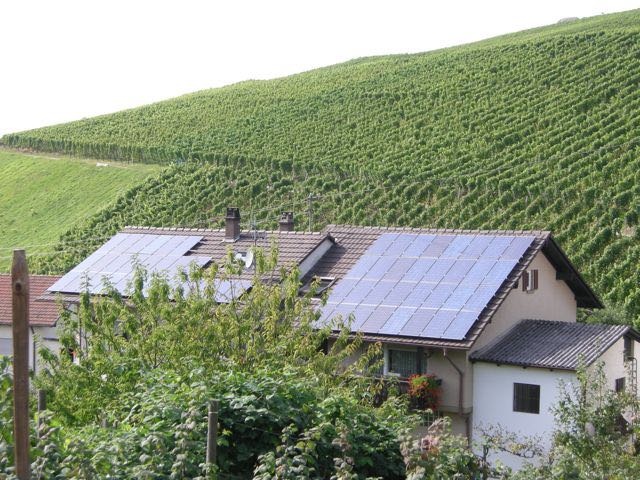
A German farmhouse takes advantage of the feed-in-tariff program.
However, Germany may be a victim of its own success. The country was set to cut back the rates it was paying for solar energy in 2010, but chose not to. In 2011, 7,500 MW of solar was installed in Germany, twice as much as the Germans forecast. This resulted in a price hike that was higher than they were expecting.
However, the structure of the feed-in-tariff involves evaluating it each year and adjusting it as prices come down and the industry grows.
In Canada there is no coordinated national effort to develop renewable energy, yet Canada has far better renewable energy resources than Germany. Places like Ontario and Nova Scotia are starting to write policy which takes advantage of their plentiful resources while certain municipalities getting in on the act as well.
For Chris Turner he also wants to find a way he can get involved personally. He’s thinking about installing a solar system on his Calgary home thanks to a lease program from Enmax.
If you are ready to take the leap, or simply curious about green energy, join us each week as we tell the stories of Canadians involved in the green energy revolution in their homes, businesses and governments.
